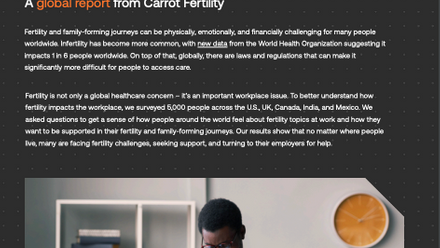Virtual doctors: the effect of Covid on digital healthcare

Then 2020 happened! Very few people could have foreseen how the year would turn out. With lockdowns leaving half the workforce working remotely, and family gatherings held on Zoom, even those who were not accustomed to things like Facetime were forced into the digital space for both social and work events.
With lockdowns and restrictions on in-person meetings, not to mention health services pushed to their limits, GP appointments have become a challenge for non-urgent care. In this new era of online and virtual services, it is no surprise that virtual GP services have transitioned to a more familiar and necessary benefit to employees.
How does it work?
Instead of waiting for a doctor’s appointment and taking time out of their workday, an employee with access to virtual GPs/digital healthcare can find and book a convenient appointment time online. This can be any time – in or outside of work hours. This flexibility in appointment slots, along with the removal of travel and waiting times, allows people to book around their schedules, fitting in healthcare where they would often postpone it. During the appointment, you can video chat via a secure app with a doctor, and the treatment journey begins, often quicker than with a conventional face-to-face meeting.
Increased employee access to healthcare
Inevitably, global organisations have begun to take notice of virtual GPs to ensure that their employees and their families have access to treatment, and that their health and wellbeing are a priority. In recent conversations with global employers, we found that over half had either implemented a digital healthcare benefit or were considering it for an upcoming launch.
Most of our customers who have a virtual doctor benefit in place have made this fully employer-funded, ensuring that the benefit is signposted throughout their platform to increase awareness of its availability.
Improved productivity, peace-of-mind and convenience
There are countless advantages of video healthcare consultations, not least the flexibility in scheduling appointments, and the reassurance that comes with having easier access to a faster service. This type of healthcare can also serve to reduce out-of-office time or perhaps away from desk time, as well as to alleviate the burden on social healthcare systems that are experiencing extreme pressures this year.
Low-cost but high-value
In addition, the cost of implementing digital healthcare benefits are not as demanding as many other employee benefits. 2020 has resulted in many organisations looking to reduce their costs and invest in lower-cost benefits which deliver maximal value to employees and employers – both from a financial and cultural perspective; virtual GPs can certainly fulfil these requirements.
Furthermore, these types of benefits sit nicely within a company’s global health and wellbeing strategy – something which has, of course, come under the microscope in 2020. Across our customer base we have seen how employers are even more driven by doing the right thing, and providing the right support to their employees.
Global digital healthcare
This benefit can be rolled out globally, although there may be some restrictions as providers are not yet in place in all countries, nor are all integrated into the local healthcare system. Where there is a need for further consultation or prescription drugs, and the service is not based locally, employees may need to link into local health systems. However, one approach that has and will continue to prove popular is the use of virtual health services for reassurance, allowing employees to speak almost immediately to a qualified medical doctor for advice and guidance in addition to local advice and treatment they may be receiving.
To summarise
Naturally, not everyone will be comfortable with a shift towards online consultations or the technology that supports this. However, in these changing times, large swathes of employees and their families have moved towards new technologies out of necessity. The idea of an online doctor’s appointment is no longer as alien as it would have been 12 months ago. It seems unlikely that, following the pandemic, there will be a total reversal of this trend; those who have engaged will continue to do so, even once social distancing is a thing of the past.
It is also likely that this will continue to change the way that healthcare is delivered in the future around the world. We have seen a number of local healthcare systems already adopt an online service allowing them to see patients in a quicker, more efficient manner, and removing the current dangers of sharing a waiting room with potentially unwell patients! While 2020 provided us with many unwanted challenges, it also forced us to be innovative in our approach to many of our benefits, which – in the long term – will be to the advantage of our employees and our businesses.
The author is Paul Andrews, global benefits director at Benefex.
This article is provided by Benefex.
In partnership with Benefex
The home of award-winning employee benefits, reward, recognition, & communications.







